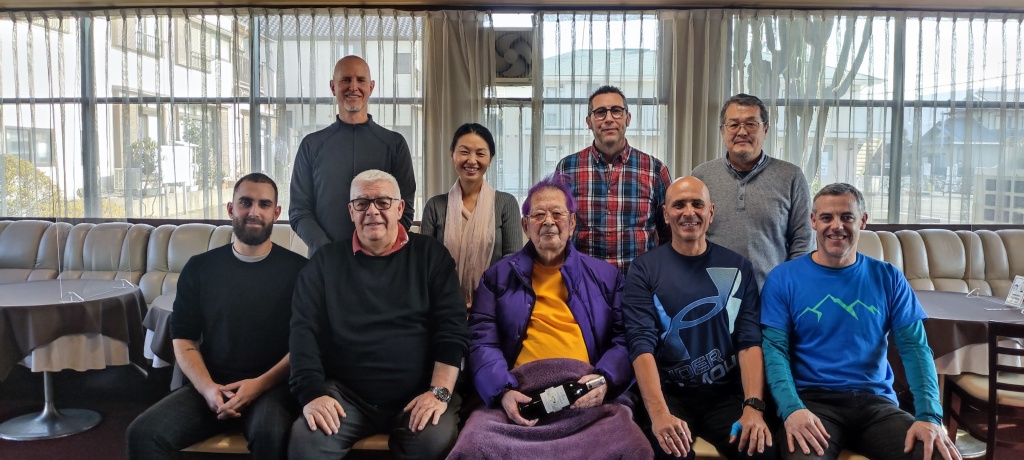
At the end of the class, Nagato sensei said, “if you master one thing, you can master anything”.
It reminded me of how Musashi became a fantastic painter after mastering the art of the sword. (1) In his famous book “Gorin no Sho”, he writes, “When I apply the principle of strategy to the ways of different arts and crafts, I no longer require a teacher in any domain.” (2)
This universal mastery is visible when you train here in Japan. The Japanese Dai Shihan are so good that whatever new field they begin to study, it turns out to be great. I often hear students being amazed by how the Dai Shihan play with the many weapons we use in the Bujinkan, and I keep reminding them that the Japanese discovered the weapons at the same time we did. As a result, many students dislike me for being critical. Many don’t get that the Bujinkan does taijutsu with weapons, but many teachers do taijutsu on one side and study weapons on the other. We are not studying Karate and Kobudō; we are studying Budō Taijutsu!
The Japanese Dai Shihan are so good and master taijutsu so well that it looks like they are very proficient with weapons without having spent hours learning the forms. In 1993 Quest released the Bō jutsu video. Everyone was amazed at the movements and the waza on the video. After a few years of training bō jutsu, I began to see some weaknesses in the forms performed by the Japanese. I spoke to Noguchi sensei about it and was startled by his answer. He said, “you know how playful Hatsumi sensei is; we discovered bō jutsu the day of the shooting in that temple. That was our first time using it.”
Mastering one to mastering all is not some lovely philosophical saying; it is a reality. And you can see that at every training. Yesterday, Stephane (Dai Shihan of the Kuma dōjō) began with a basic Musō dori. Every beginner knows Musō dori as it is part of the basics of the Tenchijin. When Nagato sensei did his first variation, he linked it (again) to the Shinden Fudō ryū and the wing of a bird. (3)
For my friend Stephane, it was a long class. Stephane is very good at attacking. He loves rugby and can be as devastating as a rugby pack pushing forward to get to the trial line. In Paris, when he is my uke, I must move correctly not to be hit, and I have to do it right because there will be no second chance. We have a WhatsApp group for the dōjō. His avatar is a gorilla which says a lot.
Yesterday, facing Nagato sensei, the gorilla was like a little bug. Whatever speed and power he used, Nagato sensei was ahead of him, controlling the situation and moving naturally. His mastery of footwork gives him an innate understanding of the whole encounter, and he reacts naturally to anything that comes to him. There is no force, only an endless flow of moves that trap uke in a world of wonder. That is what mastering the Bujinkan basics is.
So when after the final bowing, he said, “if you master one thing, you can master everything”, it made perfect sense to me.
Master taijutsu today so you can master your life tomorrow.
________________________
1. https://en.wikipedia.org/wiki/Miyamoto_Musashi
2. Gorin no sho: Hundreds of versions of the book exist. I prefer the one by Kenji Tokitsu (https://www.amazon.com/Miyamoto-Musashi-His-Life-Writings/dp/0834805677), but if you didn’t read it, here is a pdf version (that I didn’t study): https://ia802701.us.archive.org/32/items/MiyamotoMusashi-BookOfFiveRingsgoRinNoSho/Book_of_Five_Rings.pdf
3. Note for beginners: in the Shinden Fudō ryū, many waza refer to birds. As you cannot grab with a wing, the idea is to use your elbows as a wing to redirect the attacks and trap the opponent’s fist or weapon. The use of elbows is Nagato sensei’s favourite gimmick.




